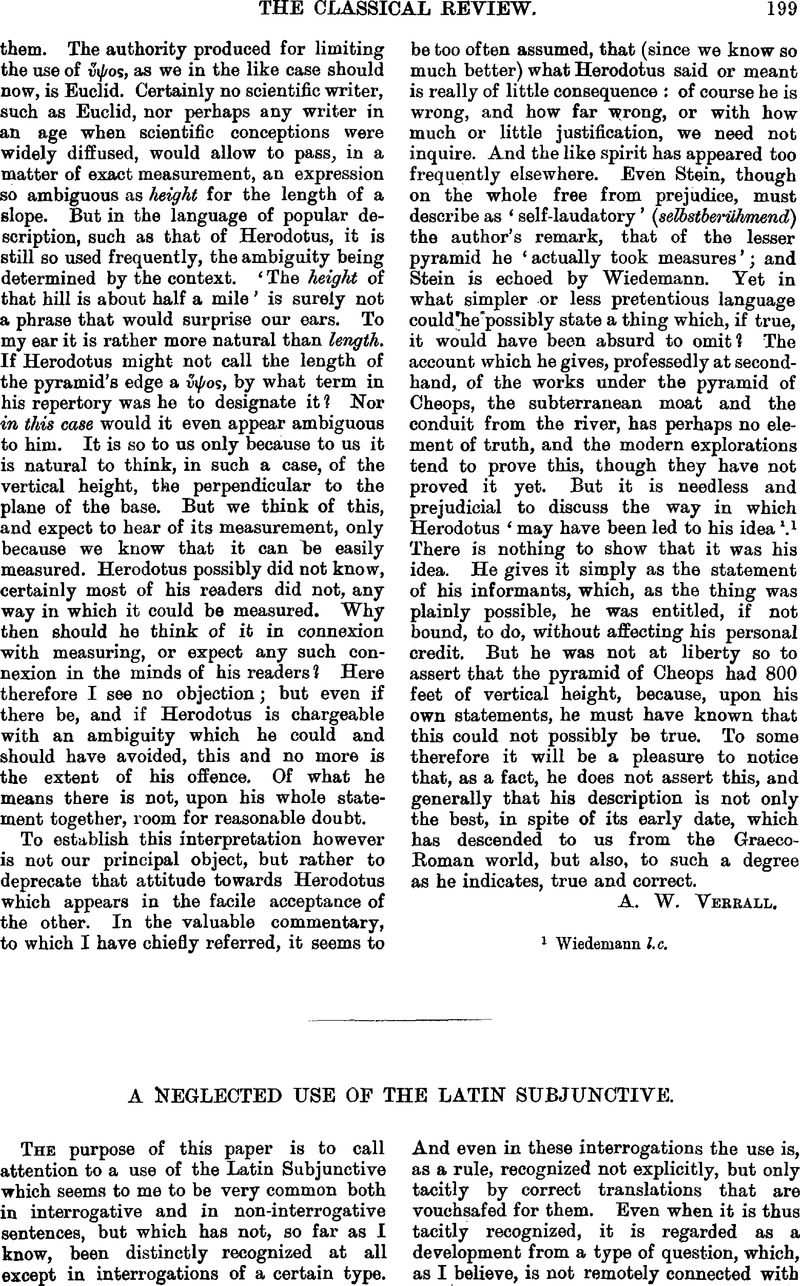No CrossRef data available.
Article contents
A Negleoted use of the Latin Subjunctive
Published online by Cambridge University Press: 27 October 2009
Abstract

- Type
- Original Contributions
- Information
- Copyright
- Copyright © The Classical Association 1898
References
page 200 note 1 Since the above was written, Delbrülck (Vergleichende Syntax, II. p. 389) has accepted my conelusions reached in ‘The Latin Prohibitive’, that questions of obligation or propriety, e.g. cur ego non laeter? hunc ego non diligam ? represent a development from the Indo-European optative, and are therefore not connected with the volitive subjunctive, as has been supposed.
page 202 note 1 For another possible interpretation, see note on this passage in my edition of the Phormio.




